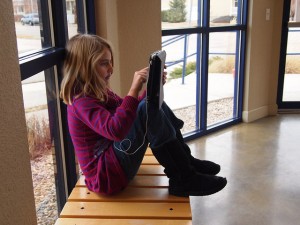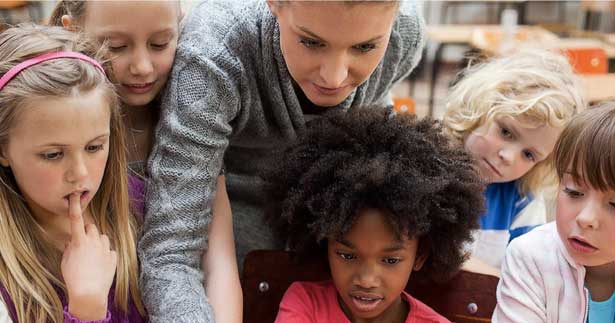In 2012, the phrase “Digital Wild West” was used as a catch-all to describe the unregulated and chaotic status of the children’s app landscape. Although the field is still characterized by relatively few rules and low “survival rate,” several efforts have been made to help parents and educators separate the good from the bad, or as the Children’s Technology Review calls it, “dust from magic.”
Different people and organizations list the best educational apps or digital books in relation to different definitions of quality. This has resulted in several different app rubrics. Some are research-based, some are more practical. In addition to regular app reviews, there are also several digital book awards.

In the classification system we developed as part of the UK Open University-Booktrust project, we aimed to develop criteria to generate discussion among parents, teachers and app developers and enable all three stakeholders to consider the potential of the digital medium for children’s stories. We presented our criteria as questions so that all three stakeholders can reflect on apps in terms of what is and what could be, and thus base their judgment on creative reflection rather than a simple “box-ticking” exercise.
We were particularly keen to foreground specific engagement patterns which are novel and specific to digital books and which nurture longterm readers’ identities. We therefore focused on the reading for pleasure literature and the facets of behavior identified as crucial for facilitating independent reading and children finding enjoyment in reading whatever it is.
When we considered the research literature salient to understanding the role digital books play in young children’s reading for pleasure, we identified seven key engagement patterns: affective, shared, sustained, creative, personalized, interactive, and balanced transmedia engagement. I go into more detail regarding each of these engagements in a series of research blogs on the Booktrust website. In this guest post, I focus on the balanced transmedia engagement category, given that it was heavily influenced by the conceptualization of transmedia elaborated in the guidebook produced by USC Annenberg Innovation Lab and the Joan Ganz Cooney Center.
How could children’s book apps and digital books support transmedia experiences?
Children’s apps open up several possibilities for trans- as well as intra-media experiences. A simple way of intra-media app experience is app hyperlinking: connecting different apps by embedding links at various points in the app or in an accompanying e-book. For instance, at the end of the What is That iBook, there is a link to the Our Story app, enabling users to create their own story.
App cross-fertilization may be also user-generated, something often termed app smashing. App smashing involves meshing or combining features from different apps to arrive at a desired final product. For instance, if an app allows users to insert text, users can smash it with another app that allows them to also embed video and audio, thus extending the activity and creating a richer final artifact. App smashing often happens spontaneously, but can be also planned as a structured activity in the classroom.
A more commercial way of providing intra-media experiences is that of in-app purchase and subscription models in which apps can be incrementally enriched or gradually built together as a suite of apps. So far, the subscription system has been the dominant pricing model here (e.g. Made in Me) but the recently introduced App Bundles could provide another way to connect experiences. At the moment, app bundling is mostly driven by revenue interests of individual developers rather than the opportunity to enrich children’s stories. However, one can imagine that in the future, app developers could work together so that there are app bundles based on various story themes, story characters, or perhaps even a child’s own preferences.
Another way of facilitating children’s app-mediated transmedia experiences is to use augmented reality apps. With augmented reality apps, transmedia producers can revamp static apps to take advantage of context information (e.g. user’s location and preferences) and bridge classic and digital story worlds in an unprecedented immersive experience. For example with the Zoo Burst app, children can experience their story as it “jumps out” of the paper and interact with it. With Smart Car from Thames & Kosmos, digital content can be unlocked using physical toys (the toy car comes with augmented reality code cards which create a virtual city on the tablet screen).
I wrote before that when adopting transmedia as a business model for children’s apps, we need to be very careful about secure management of children’s personal data and transparent pricing models. Given that developers and network producers get data on young children’s patterns of engagement, it is crucial they use these to extend, not to exploit, children’s stories.
If sensibly used, transmedia apps can endow children’s experiences with a new layer of meaning and offer them further entry points into the rich worlds that surround stories. Moreover, balanced trans- and intra-media app experiences can provide a useful spur to necessary innovation in the currently saturated app market.
 Dr. Natalia Kucirkova researches innovative ways of supporting shared book reading and the role of personalisation in early years. Natalia’s doctoral research inspired the development of the Our Story tablet/smartphone app. You can follow her work via http://open.academia.edu/NataliaKucirkova or Twitter @NKucirkova.
Dr. Natalia Kucirkova researches innovative ways of supporting shared book reading and the role of personalisation in early years. Natalia’s doctoral research inspired the development of the Our Story tablet/smartphone app. You can follow her work via http://open.academia.edu/NataliaKucirkova or Twitter @NKucirkova.



